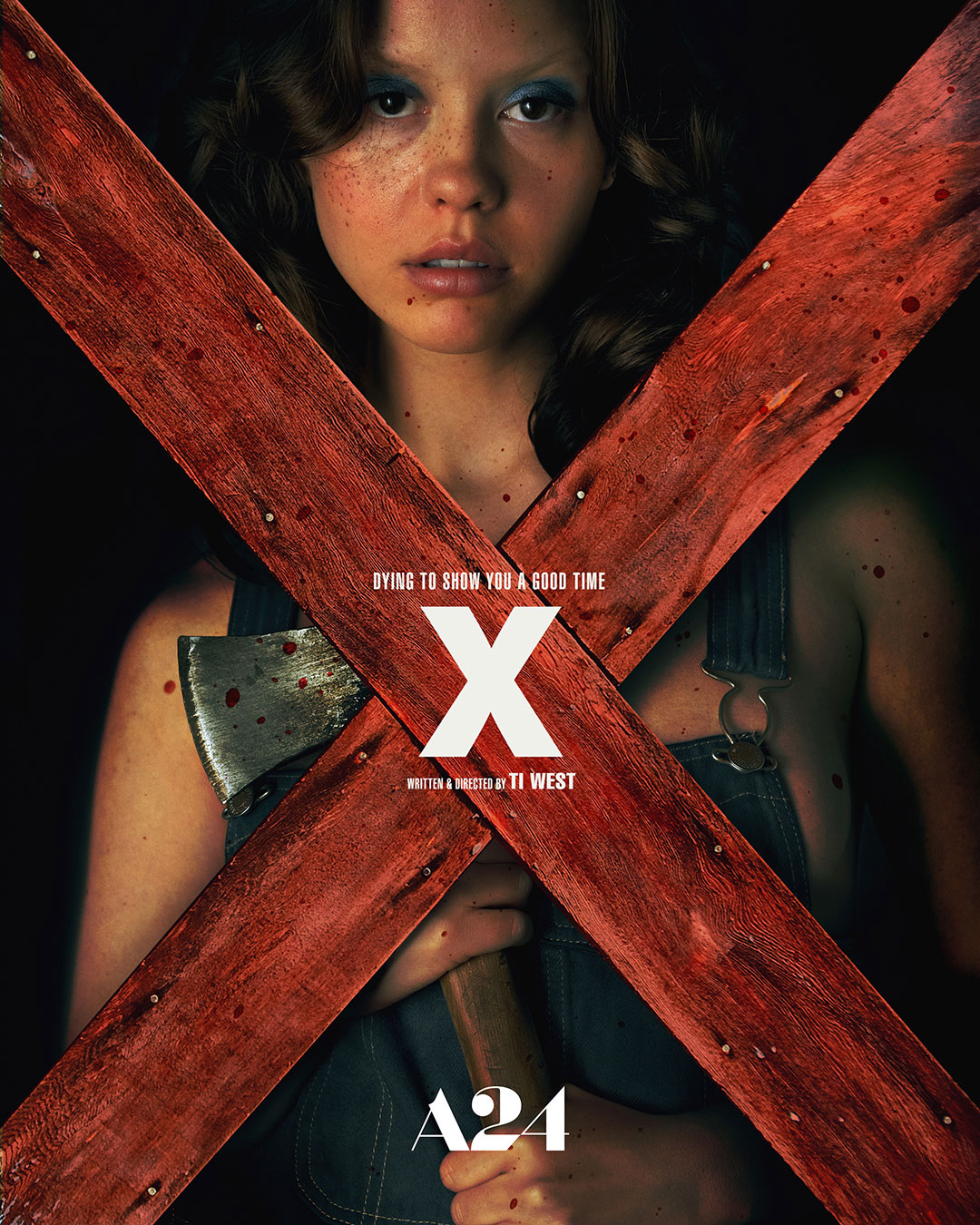‘X’ stars horror veteran Mia Goth, who plays a chilling double role as both the femme fatale lead and the elderly antagonist.
Courtesy of A24
By Molly Ryan
Ti West’s “X” measured up to be much more than a revamped nod to 1970s slasher films — it pushed boundaries and explored the darker sides of sexual desire and the feminine pursuit of power.
“X” opens with the grisly aftermath of the film’s course, leaving audiences to wonder “how?” and “why?” by the time “24 hours earlier” flashed on the screen and signified the story’s official beginning.
Set in 1979, “X” follows a group of six who rent out a seemingly perfect set for their adult film in rural Texas. Blinded by the pursuit of fame, the group ignores the clearly precarious circumstances that surround their strange hosts — an elderly man, Howard (Stephen Ure), and his not-all-there wife, Pearl (Mia Goth).
When Pearl bears witness to the adult film’s “production” in a voyeuristic pursuit, havoc subsequently ensues.
This probably goes without surprise, but I won’t tiptoe around it, there’s a lot of sex and violence in this movie — so don’t blame me if you decide to go see it.
The film stars Brittany Snow as comic relief Bobby-Lynne; Martin Henderson, the next best thing to Matthew McConaughey, as the film’s producer Wayne; rapper Kid Cudi as the project’s male gaze, Jackson; budding star Jenna Ortega as the “good girl gone bad”, Lorraine; and horror veteran Goth double-casted as both Pearl and the femme fatale lead, Maxine.
“X” began highly promising with engaging cinematography, unique editing and witty dialogue with inspiration taken from and references to classic horror films like “Psycho” and “Texas Chainsaw Massacre”— indicative of expert-level attention to detail on West’s part.
In typical fashion of the film’s arthouse production company, A24, “X” is shot on a film camera rather than a digital one — making for a gritty and more immersive ‘70s experience.
The pace had me expecting the slasher sequences of “X” to be a slow burn akin to Quentin Tarantino’s “Once Upon a Time in Hollywood” for whatever reason — where much of Tarantino’s flashy signature violence was saved for an explosive and intense end to the movie.
However, after little development or meaningful backstory on behalf of Pearl and Howard, the gore’s abrupt commencement unfolded in a manner that I personally found unfulfilling.
The subsequent violence was predictable and on-the-nose, which read to me as another homage to the ‘70s slasher era, but just turned out to be a bit corny.
Aside from the gore and its artistic style, sex is one of the main centerpieces of “X.”
While many of the sex scenes take place in the context of adult filmmaking in their melodramatic and longwinded forms, the film’s erotic overtones make a twisted shift in the latter half.
I could have happily gone the rest of my life without seeing some of the film’s intentionally grotesque moments, however, it is undeniably where the film best conveys its symbols and themes. In other words, where “X” shines it simultaneously defines its status as deeply disturbing.
As the story progresses, the body count grows and questions begin to be answered (albeit with still little development), the film sheds light on certain aspects of sexual desire that I had never seen depicted in a film, let alone gave any thought to.
Goth as both Maxine and Pearl makes perfect sense, despite the exaggerated use of special effects makeup (which I’d like to think is another reference to the ‘70s.)
While I discovered the film’s double casting of Goth retrospectively, it almost added to the impact of understanding the movie’s emphasis on the ills of hyperbolic eroticism and an obsession with being desired.
By the end of the film, viewers explore both Maxine and Pearl’s unrelenting thirst for power and the role that sex plays in their pursuits — each a mirror of one another.
Goth’s performance is compelling, but I personally feel, if given more screen time and development, Lorraine played by Ortega could have been the star of the movie.
I’ll be honest, I still don’t really know how to feel about “X.” I reflect on the film with a decent number of positive feelings, but it still doesn’t account for the “this is not it” written in my notes app when the credits rolled.
A24 never fails to disturb me in a different way with nearly every film they produce — vis a vis “Hereditary” and “Tusk.” But like many other A24 films, “X” had a fairly balanced ratio of visually pleasing stimuli and unforgiveable images that I might never unsee.
But somehow, their films’ undeniable strokes of genius and charm keep me coming back, ready to be unnerved all over again.
3/5



